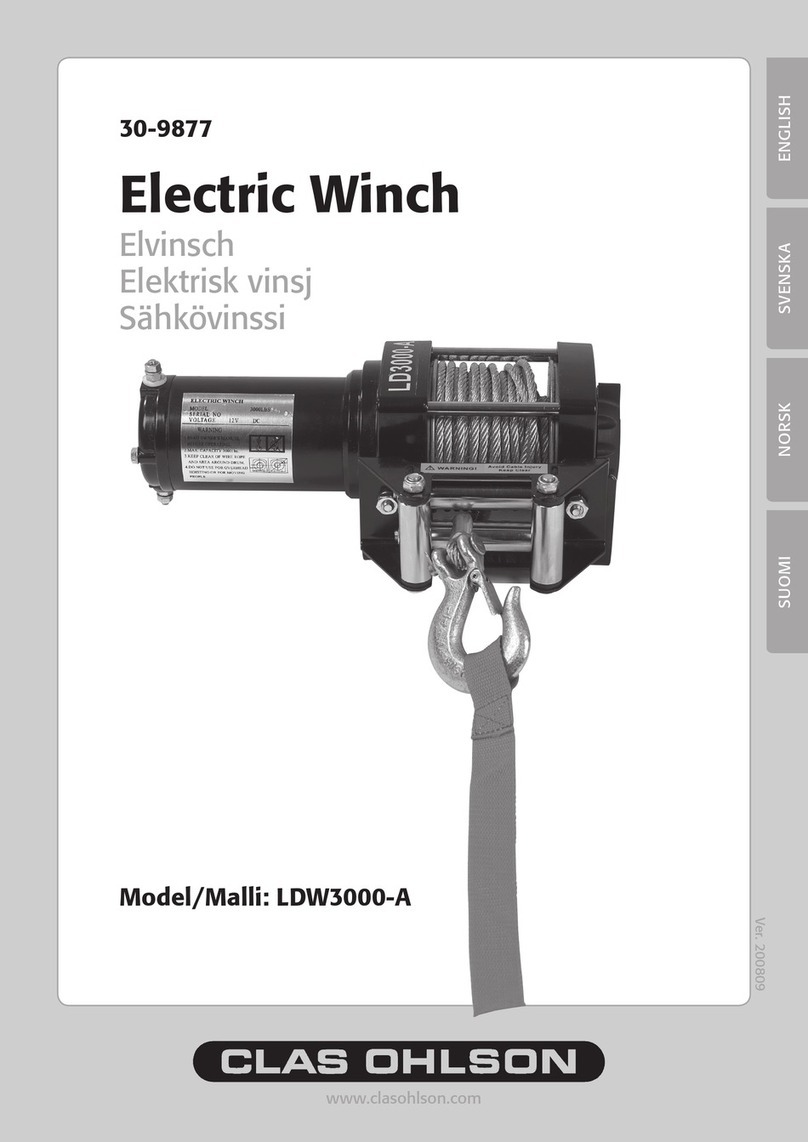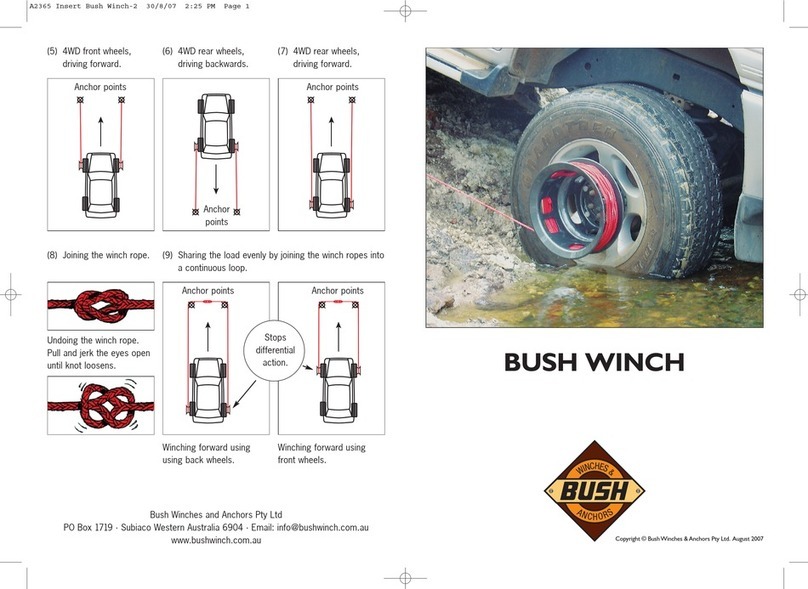
BUSH
WINCH
SERIES II KIT
Important notice:
Please read and familiarise yourself with this
information before using the Bush Winch
Series II Kit
The Bush Winch recovery system can
be safely and effectively used in a wide
variety of situations. However, winching
imposes very high stress loads in a
dynamic situation and can therefore
result in unexpected outcomes.
Winching is an inherently dangerous
operation and it is in your own interest to
make sure you understand how to winch
safely.
1. Do not use other rope, chain, webbing, straps or cables on the Bush Winch.
The winch rope recommended and supplied is very strong and fit for the
purpose. It has been specifically selected to preferentially break in an overload
situation to help protect you from injury and your vechile from being damaged.
The winch rope is relatively thin and inelastic compared to most other ropes and
therefore stores relativity low levels of kinetic elastic energy to reduce the effects
of recoil and whipping if it breaks.
2. Do not let anyone stand close, behind or in front anywhere near the vechile,
winch ropes or anchor points when winching. A vehicle being winched up
a slope may slide down again if the anchor fails or the winch rope breaks.
Carefully consider the implications of this happening.
3. Stay wholly within the vehicle when winching with doors closed. Winch
slowly in low gear. You can stop and check progress at any stage if it’s safe to
get out of the vehicle.
4. Only attach the Bush Winch when needed. Do not drive around with the
Bush Winch attached permantly as it may come off and spin away.
5. Do not tie or use shackles to attach the end of the winch rope to any one
point on the Bush Winch. Instead wrap the winch rope around the winch drum
and through the slots in the rear flange to have it hold in place by friction
alone. Knots cannot be be undone after the high winching loads have been
applied and knots and shackles exert an uneven load on the winch drum.
6. It is essentual that the wheel nuts/lugs or bolts supplied with the Bush
Winch seat into the wheel rim of your vechile in exactly the same way as the
wheel nuts supplied by the manufacturer, Failure to have correct fitment on
your wheel rim may result in your wheel rim coming of while driving and will
compromise the strength and structural integrity of the Bush Winch when
attached
Disclaimer: Bush Winches and Anchors Pty Ltd will not accept any claim for damage
or injury as a result of the use of the Bush Winch.
Bush Winches and Anchors Pty Ltd make no specific representation as to the
suitability of the Bush Winch for your purpose.
Two winches are supplied in the kit and they attach to the wheel rims of your vehicle
with specially designed wheel nuts/lugs or bolts. These are supplied to replace those
already on your wheels and are designed to take the extra load that winching causes.
They can be left on as a permanent replacement, allowing easy attachment of the
Bush Winch at any stage. The wheel nuts/lugs or bolts will look different in a number
of ways to what you had mostly because they’ll have a slotted head on top that the
winch attaches to. When needed the winches, one or both depending on what you
decide, are slotted on to the head of the wheel nuts/lugs or bolts. They can attach to
the front or back wheels, depending on where the drive is on 4WD’s or 2WD’s. One
end of the winch rope is attached to the winch and the other to the anchor. Put the
vehicle into gear and slowly drive forward or backwards, as the case maybe, until the
slack in the winch rope is taken up by the spinning wheel. Once the winch rope is
tight, the vehicle is forced to roll until the wheel has traction again. The winch ropes
will go slack and you can stop and take the winches off.
You will notice the Bush Winch rope is red with specific charateristics to match your
vehicles weight and power.
Anchor
points
Anchor
points
Joined winch ropes
1. Winching to seperate
anchors using back wheels.
2. Winching to seperate anchors
backwards off back wheels.
3. Using both anchors together
with joined winch ropes.
4. Joined winch ropes.
Vehicle turning right.
www.bushwinch.com




















